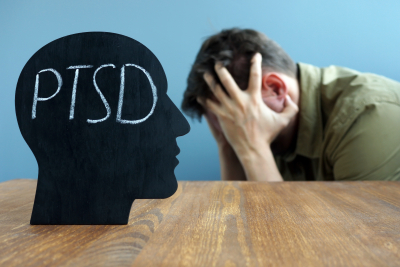Complex post-traumatic stress disorder (cPTSD) is a mental health condition that can develop in individuals who have experienced long-term or repeated trauma. Particularly in situations where they have had no control over the events occurring. It is often referred to as a more severe form of post-traumatic stress disorder (PTSD). The symptoms of cPTSD can be debilitating and can have a significant impact on an individual’s ability to function in daily life.
cPTSD is not currently recognized as an official diagnosis in the Diagnostic and Statistical Manual of Mental Disorders (DSM-5). However, it is widely recognized within the mental health community and is often used as a descriptive term to differentiate from PTSD. The DSM-5 includes PTSD as a diagnosis and characterizes it as a response to a single traumatic event, whereas cPTSD refers to prolonged exposure to trauma and often involves a pattern of abuse and neglect.
Trauma and PTSD
Trauma is an emotional response to an event or experience that is overwhelming and often life-threatening. Traumatic events can include physical or emotional abuse, sexual assault, natural disasters, war, and witnessing violence. PTSD is a mental health condition that can develop in individuals who have experienced or witnessed a traumatic event. Symptoms of PTSD can include flashbacks, nightmares, avoidance behaviors, hypervigilance, and heightened emotional responses.
PTSD is classified as an anxiety disorder and is characterized by three main types of symptoms: re-experiencing symptoms, avoidance symptoms, and hyperarousal symptoms. Re-experiencing symptoms can include flashbacks, nightmares, and intrusive thoughts. Avoidance symptoms can include avoiding triggers that remind the individual of the traumatic event, emotional numbing, and withdrawal from activities that were once enjoyed. Hyperarousal symptoms can include being easily startled, hypervigilance, and a heightened state of arousal.
cPTSD and Its Symptoms
cPTSD, on the other hand, is a type of PTSD that is often associated with prolonged or repeated exposure to traumatic events. Individuals with cPTSD may have experienced abuse, neglect, or other traumatic experiences over an extended period, such as childhood or domestic abuse. As a result, the symptoms of cPTSD can be more severe and can last longer than those of PTSD.
The symptoms of cPTSD can be broken down into four main categories: re-experiencing, avoidance, emotional dysregulation, and interpersonal problems. The re-experiencing symptoms of cPTSD are similar to those of PTSD and can include flashbacks, nightmares, and intrusive thoughts. However, in individuals with cPTSD, these symptoms can be more frequent and intense.
The avoidance symptoms of cPTSD can include avoiding people, places, or situations that remind the individual of the traumatic event. This can lead to social isolation, emotional numbness, and withdrawal from activities that were once enjoyable.
Emotional dysregulation is a common symptom of cPTSD and can include difficulty regulating emotions, intense feelings of shame, guilt, or self-blame, and difficulty with trust and intimacy. Individuals with cPTSD may also experience mood swings, emotional outbursts, and have a heightened sensitivity to criticism or rejection.
Interpersonal problems are another common symptom of cPTSD and can include difficulty forming and maintaining relationships, a fear of abandonment, and a tendency to isolate oneself from others. Individuals with cPTSD may also have difficulty with boundaries, struggle with assertiveness, and have a tendency to be overly accommodating to others.
Causes and Risk Factors
cPTSD can develop in individuals who have experienced long-term or repeated trauma, particularly in situations where they have had no control over the events occurring. This can include childhood abuse, neglect, or exposure to domestic violence. Other risk factors for developing cPTSD







